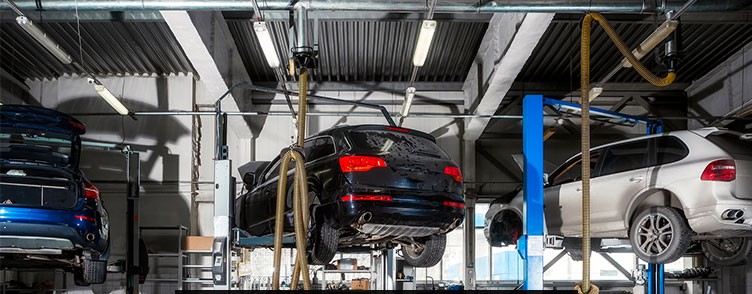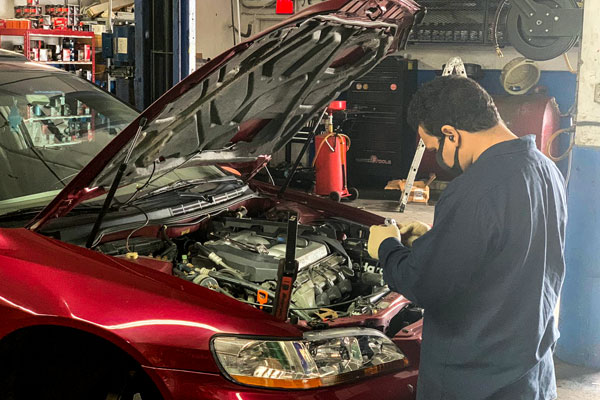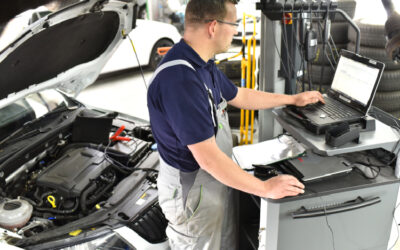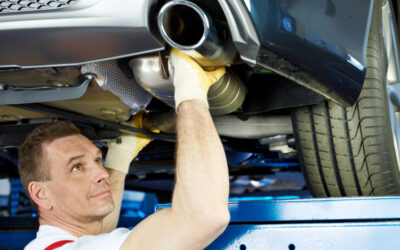Manual Transmissions Process
No matter whether you have rear-wheel or front-wheel drive, transmissions are always required to transmit the necessary power and torque from your engine to your vehicle’s drive wheels. Transmissions allow an engine to operate at a few different speeds or gears, while your vehicle can travel at a large range of speeds. Each gear in a manual transmission has a maximum range of RPMs (revolutions per minute), referred to as a redline. Manual transmissions are very different from automatic transmissions. The most notable difference is that a manual transmission has both a clutch pedal and a gearshift or a stick shift, while automatic transmissions refuse to have either. A manual transmission includes a clutch, gear selector fork, collars, and several gears and shafts. A manual transmission is quite simple in comparison to the complexity that is an automatic one. There is just one main shaft that supplies all of the power to the manual transmission. This initial shaft is turned and powered by the engine. The shaft is connected to a gear and travels through your vehicle’s clutch. The clutch is responsible for connecting or disconnecting the engine from the transmission. Since your engine is always running, your clutch must be engaged in order to stop your transmission from turning (which is why your clutch must be engaged when you are shifting gears and also when your vehicle is stopped). Once your clutch is released, then your engine is reconnected with the initial shaft and the transmission. When the engine is connected to the transmission (the clutch is released), the initial shaft’s gear is connected to another gear that powers the layshaft. The layshaft contains seven total gears that all turn as one. The first gear is connected to the initial gear and shaft mentioned above, and the six other gears are connected to gears corresponding to first through fifth gear and reverse. For the purpose of this service description, Go-Green Auto Service Corp will call these six other gears, that correspond to what gear your vehicle is in, shift gears. We thus far know that the initial shaft and gear is connected to the layshaft, and then the layshaft’s gears are connected to the six shift gears. The six shift gears rotate around – but are not connected to – the transmission’s final shaft, which is connected to your vehicle’s drive wheels. What does connect the shift gears to the final shaft is one of three collars. These collars are directly connected to the final drive shaft and can move left or right to connect to a shift gear. Now, this is finally where your stick shift comes into play. The stick shift controls your transmission’s gear selector fork and tells the selector fork which collar to move and to which gear the collar will be attached. Each collar can connect to one of two shift gears: the first collar can connect to either the first or second shift gear, the second collar can connect to the third or fourth shift gear, and the third collar can connect to the fifth or reverse shift gear. Now…, let’s say you wanted to shift from third gear to fourth gear. The first thing you do is you step on your clutch and move your stick shift from third to fourth gear. This will tell your transmission’s gear selector fork to move the second collar and connect it to the fourth shift gear. Then, after you release your clutch, the engine will be reconnected to the transmission and the initial shaft will connect to, and turn, the layshaft. The layshaft will then continue to turn all of the shift gears, and since the collar is connected to the fourth shift gear, the fourth shift gear will turn the final drive shaft and power the drive wheels. However complicated it may seem, it is a very simple process. Now that we have shown you how a manual transmission works, Go-Green Auto Service Corp can discuss with you what occurs during a manual transmissions service. In order to keep your manual transmission working as efficiently as possible, this necessary service is required. During this service, your transmission fluid is drained and replaced by Go-Green Auto Service Corp.

Since several shafts and gears power your manual transmission, it is very important to keep these parts clean and lubricated. Transmission fluid can be polluted over time with small pieces of metal and rust debris that fall off the transmission gears or by water. This is why it becomes important for Go-Green Auto Service Corp to change your transmission fluid, so these tiny particles aren’t traveling through the fluid and damaging your transmission’s gears and shafts. Go-Green Auto Service Corp specializes in both manual and automatic transmissions, so please be sure to bring your vehicle to us to have its manual transmission serviced and it will always perform flawlessly and last you.





0 Comments